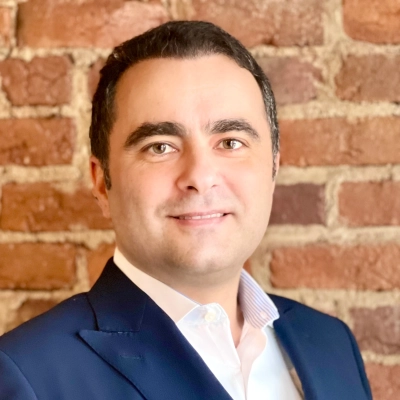5 Professional Liability Claims Patterns Changing the Insurance Landscape
Professional liability insurance is evolving rapidly as experts identify significant shifts in claims patterns across multiple industries. The healthcare, mental health, architecture, and consulting sectors are all experiencing new risk exposures driven by technological advancements and changing practices. These emerging liability trends require insurance professionals to reassess coverage approaches while businesses must adapt their risk management strategies.
Medical Malpractice Claims Rise, Coverage Adapts
In recent years, the medical profession has witnessed a significant shift in professional liability claims patterns, primarily driven by an increase in the frequency and severity of malpractice cases. Notably, obstetric-related claims have surged, with settlements for childbirth injuries averaging £11.2 million per case in the UK. This escalation is attributed to factors such as rising medical costs, heightened patient expectations, and the complexities introduced by advanced medical technologies.
In response to these evolving risks, insurance coverage recommendations have adapted accordingly. Insurers are now emphasizing the importance of comprehensive coverage that includes legal defense costs and considering both occurrence-based and claims-made policy forms to ensure adequate protection. Additionally, there is a growing focus on risk management strategies, including the implementation of advanced medical technologies and adherence to updated safety protocols, to mitigate potential liabilities. These adjustments reflect a proactive approach to addressing the changing landscape of professional liability in the medical field.
Teletherapy Creates New Risks for Mental Health
Mental health professionals, particularly therapists, psychologists, and licensed clinical social workers, have seen a significant shift in liability risk over the past five years. The rise of teletherapy, along with an overwhelmed mental health system, has created new legal exposures that many practitioners weren't trained to navigate. For example, more clinicians are being sued or reported for alleged boundary violations during remote sessions, failure to assess suicidality when clients are out of state properly, and lapses in mandated reporting or documentation protocols. Some claims involve relatively minor missteps, such as an ambiguous session note or a delayed follow-up, that are then used to allege negligence in high-stakes cases.
Coverage has evolved in direct response. Insurers now strongly recommend that mental health providers secure cyber liability endorsements, ensure their informed consent and intake processes include telehealth-specific disclosures, and maintain state-specific licensure compliance, even for short-term or cross-border clients. There's also growing recognition that occurrence-based policies offer better long-term protection for therapists who may shift employers or transition to private practice. Beyond that, the best policies now include legal consultation hotlines, risk mitigation toolkits, and support for responding to licensing board complaints because the reality is, a licensing board letter can be just as stressful and costly as a civil lawsuit.
Therapists are being asked to hold more than ever before—emotionally and legally. Smart liability coverage today doesn't just protect against lawsuits; it gives professionals a safety net in a system that's constantly shifting beneath them.

Architecture Liability Shifts From Design to Data
One profession where I've seen a dramatic shift in professional liability claim patterns is architecture and engineering. Historically, most claims involved design errors or structural miscalculations discovered during construction. But in recent years, the surge in digital modeling (BIM), sustainability certifications, and integrated project delivery contracts has fundamentally changed the risk profile.
Today, claims often stem from data reliance and coordination failures rather than traditional design flaws—think: an architect relying on an outdated 3D model shared by a subcontractor, or a sustainability claim (like LEED certification) that later proves unachievable. These disputes blur the line between professional negligence and contractual misrepresentation, leading to complex multi-party liability.
In response, my coverage recommendations have evolved toward broad-form professional indemnity with explicit extensions for technology use, digital design tools, and green certification representations. I also advise including clear "definition of professional services" clauses to encompass emerging tasks like digital data management and sustainability consulting.
The key insight: as professions evolve from craft to tech-driven consultancy, liability follows the data trail. Coverage must now anticipate not just errors in judgment—but errors in information flow.

Telemedicine Transforms Healthcare Liability Landscape
One profession where professional liability claim patterns have changed significantly in recent years is healthcare, particularly among telemedicine providers. The rapid shift to virtual care during and after the pandemic introduced new risks tied to technology, data security, and communication barriers. Claims that once centered around misdiagnosis or procedural errors are now increasingly linked to documentation gaps, technical failures, or data breaches during virtual consultations.
Coverage recommendations have evolved to address these emerging risks. Many insurers now emphasize cyber liability add-ons within professional liability policies, covering data loss, ransomware, and privacy violations. There's also greater focus on consent-to-settle clauses and risk management training for telehealth practitioners to minimize miscommunication and ensure clear documentation of patient interactions.
This shift highlights how professional liability coverage is no longer just about malpractice—it now integrates technology safeguards and operational best practices to reflect how healthcare delivery has modernized.

AI Brings New Exposures to Management Consulting
Management consultants.
Over the years, negligence and professional errors have been common in lawsuits against management consultants. But now we can add another exposure to that risk - misuse of generative AI, which makes up fake citations, plagiarism, and/or erroneous advice. Case in point how recently Deloitte Consulting was caught using GenAI in a $290,000 report it submitted to the Australian government. Insurers started to respond to this by excluding AI from their E&O policies.
Some carriers, like Berkley, have introduced broad exclusions that eliminate coverage for "any actual or alleged use, deployment, or development of Artificial Intelligence". Insurers such as Hamilton Select are adding exclusions specifically for "generative artificial intelligence."
On the other end of the spectrum, insurtech Armilla, in partnership with Lloyd's of London, offers dedicated protections for certain AI exposures. Munich Re, a large re/insurer, introduced AI insurance products specifically for that exposure.



